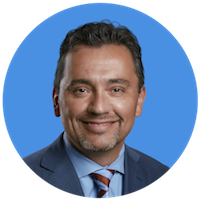Spine is an interesting specialty. Currently, either an Orthopedic Surgeon or Neurosurgeon can call themselves a Spine Surgeon. Back in the day, responsibilities in the spine world were divided up between Orthopedic Surgeons (Orthopods) and Neurosurgeons (NSurg). For example, if a patient needed a fusion AND a decompression, the NSurg would do the decompression and the Orthopod would do the instrumentation and bone graft harvest for fusion. Since these early times, the specialty of Spine Surgery has blossomed into post residency fellowships teaching the art of spine surgery to both specialties. Both Orthopods and NSurg’s perform both types of procedures throughout the spine. Having two different specialties involved in spine surgery has helped fuel the expansion of surgical options.
The renaissance in Spine Surgery techniques really harkens back to our ability to image the spine. With the advent of X-rays, we could finally see the bony structure known as the spine. The CAT scan, which debuted in the late 60’s, allowed us to better visualize the bony elements of the spine and infer whether the nerves were pinched (stenosis). Finally, with the birth of the MRI in 1977, we could finally see the nerves AND the quality of the discs. The ability to judge normal vs abnormal, disc vs bone pathology or severe vs mild stenosis was paramount to the metamorphosis of the spine specialty. Not coincidentally, the increase in spine surgeries and the advances in instrumentation all follow our ability to “see” the spine better.

The techniques AND accuracy of instrumentation placement has also improved over time as we now have image guidance to verify our trajectory and the screw diameter and length. Initially, placement of screws for example, were based on local landmarks, x-ray visualization and experience. Whenever patients have excessive rotation to the spine (Scoliosis), prior surgeries or smaller anatomy than usual; placement of screws or hardware becomes much more dangerous. For example, a 3.5 mm C2 pedicle screw is placed into a bony tunnel (pedicle) that can be anywhere from 4-5 mm in width bordered by the vertebral artery laterally AND the spinal cord medially. Trying to identify the right trajectory and the right length to place a 3.5 mm screw is difficult.
With the advent of 3-D computer assisted image guidance; the appropriate trajectory, width & length of screws can be planned ahead of time. These screws can be placed in a safer fashion and maximization of biomechanics can be obtained. This allows us as spine surgeons to perform the surgeries with less risk AND obtaining the biomechanically most stable construct possible. In the end, we do a better job with less risk!!!!
Having been trained in the late 90’s into the early 2000’s, I have been fortunate to observe the growth of spine surgery. I will be the first to admit, the physical demand of spine surgery and the high risks associated with the anatomy makes this specialty very demanding. I oftentimes marvel at how far hardware development, imaging technology and patient selection has come. Ultimately, the specialty of spine surgery is safer, technically better and more effective than at any other time in the past.
 Back to Blog Homepage
Back to Blog Homepage
